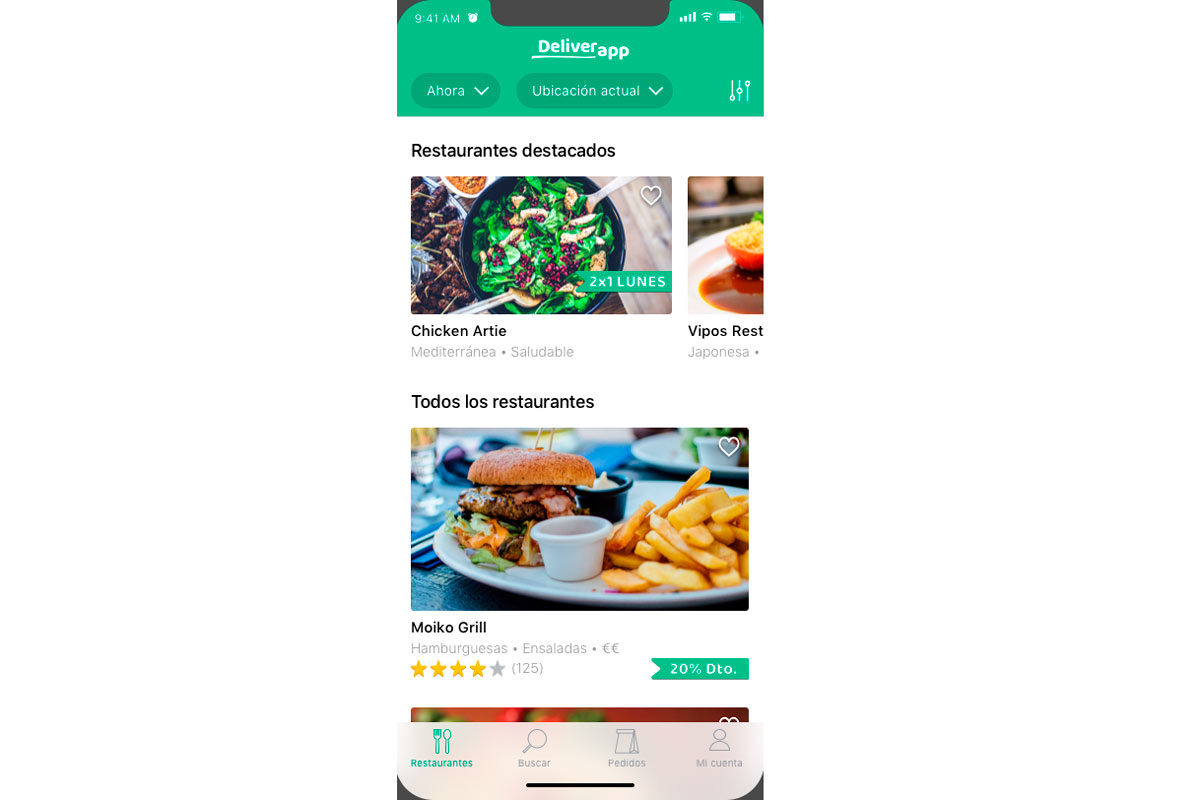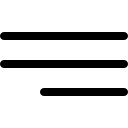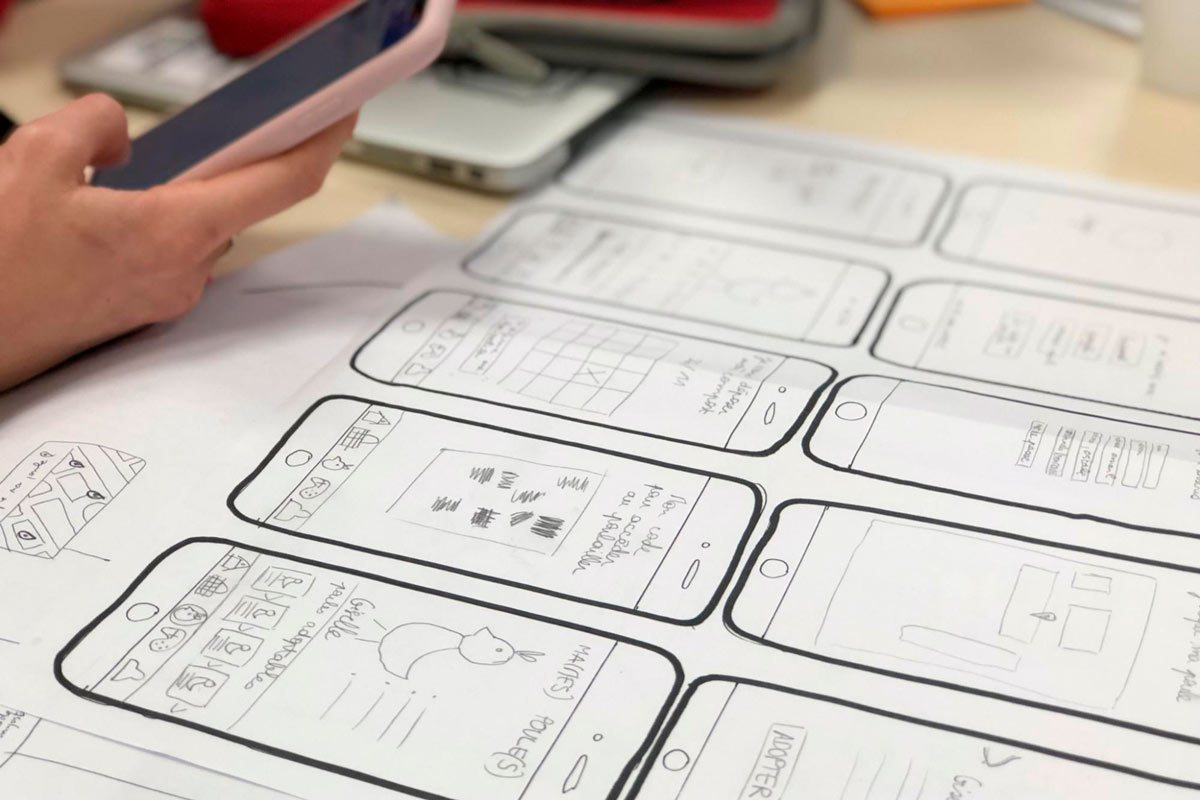From the very first moment, app design was one of our main priorities. It´s our way of letting the user know that we think of them. We make sure what´s on the surface, reflects the quality of the code that lies within.
App design is much more than painting the views of the application, mobile apps design has the great responsibility of structuring all the functionality of the app. You must organize all the information in a hierarchical way, checking the fluidity between screens to obtain a good user experience. And of course, then you have the fun part of studying the typical user and industry applications to know what colors to use and what look to achieve.
What is an App?
Digitization focused on mobile devices has been growing since the mobile application stores opened back in 2008. But, what is an app? What is the difference between a responsive web or a progressive web app? An app is a type of application designed to work on mobile devices and tablets. It is usually used instead of a website when the user needs the use of the hardware components of the device (camera, geolocation, etc.). Responsive web and pwa simply adapt to the device screen, but lack some of the benefits that apps provide.
What is the mobile app design?
The design of mobile applications consists of structuring the navigation of the app from the list of functionalities of the solution and defining the visual guidelines that will be applied to the different elements and screens.
Therefore, it guarantees, on the one hand, that the information is well structured and checks that the navigation and functionality of the app flows correctly, ensuring an adequate user experience. And on the other hand, it ensures that the look and feel of the app is consistent with the brand’s style guide and is attractive to the type of user it is aimed at.
How to design a mobile app?
But, how is app design done? We could say that the design goes through a series of phases until reaching the final solution that satisfies the client’s wishes:
- In a first phase, it is necessary to study the model user who will interact with the app so that the design adapts to their needs and preferences.
- Then the navigation map of the app is defined, defining the future screens and the actions associated with them.
- Next we elaborate some versions of the same view with different look and feel to start defining the UI or design of the user interface of the app.
- When the client validates the proof of concept, the rest of the views are designed, creating the final navigation map with the UX and UI applied, thus having the interface design finished.
UX-UI: Interface design and user experience should go hand in hand in the design of an app.
The terms UX and UI are equally used in the world of app design but they need to be treated differently and each term needs to be given the importance they deserve.
App design is not simply a matter of aesthetics, there are a great deal of decisions to be made for an app to be accepted in a positive way by users.
On the one hand, the UX focuses on a design with the user in mind while on the other hand, the UI´s main objective is to optimize the visual side of the app.
Our design team play an integral role in the creation of our clients applications because for us, it is of the upmost importance that the user finds what they are looking for in an easy and intuitive way. We want the user to be happy so that they return to the app.
At Mobivery you´ll design your project from scratch, with our Design service.
In the UX or user experience
We put ourselves in the end user´s shoes as we believe the user needs to understand the structure of the app the first time they open it. We might not get another chance to captivate them. From this point of view, in the design of apps, we think about what we would like the user to do during their time using the app. This all needs to be done in the simplest possible way, so that the user doesn´t notice the work of the UX but at the same time doesn´t miss anything either. Everything is where the user intuitively thinks it is.

In the UI or interface design
All efforts are focused on improving the look of the terminal making in order to make it adequate for the experience of the user. The presentation of the look and the feel must pay close attention to mobile platform. In this case, a native development in designing an app is by far better than a hybrid one. That is why, our team of designers and our developers work side by side in order to deliver an easy interaction of the device to the user. Our apps which have been tailor-made, feel way more natural to the user. We also care that the design is optimized for all platforms (phone, tablet). By taking all of these factors into account, we hope to attain total client satisfaction.

Adapting the design of an app to suit each mobile platform.
The elements of design are different within every platform and users are used to the different formats, even at an unconscious level. When designing an app we must take into account the fact we need to adapt to the user of every different mobile platform. Our app development is carried out by a team of experts in the field. This allows for any given app design and usability to be suitable across all mobile platforms.
App Design Types
The design of apps is also influenced by the technology that we will use in the development of the application. This is so because the design of mobile applications must take into account the style guides of the main platforms, therefore it cannot be designed in the same way for an Android terminal as it is for an iPhone. But what about when development is the same for both platforms? What happens to the design?
Native Apps or Native Apps
Native apps are so named because they are native or proprietary to a single platform. Native apps therefore use the language recommended by each operating system for their development. If this is so for development, so is it for design. The design of native apps requires perfect knowledge of the Android and iOS style guides to adapt to each of these operating systems and for the user to feel natural from their platform. Therefore, in the design of native apps, a single design must be made for the Apple app and another for the Android app. In this way, your users will find an application that is highly adapted to their devices and with a look and feel that they are used to.
Web applications or Web Apps
Web apps work similar to native ones and work on mobile devices. However, there are significant differences as webapps need the device’s browser to work. As for the design, although adequate, it does not usually present the exquisite usability that native app design offers us. The design will adapt well to all devices, including tablets, but it will have many similarities between them and therefore may not feel as natural as a native app.
Hybrid Apps or Hybrid Apps
In hybrid or cross-platform applications, the same programming language is used that works for both iOS and Android. This saves a lot of effort on the development side, but what about designing hybrid apps? Well, something similar happens, less time is spent because a single design is usually made that works for both platforms. On the one hand, this facilitates development, although of course it has the disadvantage that the user does not reach the level of perfection in terms of appearance that native app design offers.
How to design a mobile app for a company?
The design of apps for companies must, on the one hand, study the model user who will interact with the app so that the design of the app adapts to their needs and preferences. And on the other, take into account the previous style guides of the company’s brand.
Therefore, to make a good app design for companies, we need to collect the contributions that the client communicates to us and know what the marketing area needs. Who is going to use the app, how old are they, what work are they doing while using the app, etc. Knowing the context and preferences of the model user in this way, we will achieve an app design with a magnificent user experience.
In the design of apps for B2C companies, as is the case with delivery companies, our goal will be to captivate the user with a careful hierarchy of information and the use of bright and attractive colors that make the use of the app appealing and that promote conversion and recurrence.
In these posts you will be able to see all the tricks on how to design a perfect delivery app: Delivery app design – part 1 (analysis).
Advantages and disadvantages of Apps for companies
Apps for companies, if they are well conceptualized and fulfill the mission of managing a process more effectively than was done before digitization, always brings advantages.
- On the one hand, the improvement of productivity, the operator takes less time if he can carry out operations without leaving his workstation.
- It also leads to an improvement in the quality of production when the app focuses on reviewing parts or human tasks.
- It improves communication between middle managers and managers because it can focus on people management, facilitating the work of the human resources area.
- It streamlines business work and enables faster conversion when deals can be closed without the need for paper and with access to the entire customer history.
And so we could go on ad infinitum, because in custom apps the advantage is always the solution it provides to the company. And no one knows better what solution they need than a client well advised by a technology partner specializing in app design for companies.
Best Mobile App Designs
The best app layouts are the ones that are memorable to the user but allow the app to incorporate images and elements without looking too cluttered.
A good example of this is the delivery app we were talking about earlier. Here, although green is a very striking color, its use in a flat way allows a good integration with photos of food and coexists well with light backgrounds.
The best app designs are also the ones that take into account the small details to make the app really attractive. In these examples we see how the icons for allergens, the backgrounds, the striking colors are taken care of. It is important to work on the graphic line so that it is suitable for all audiences and easy to handle.

In a nutshell
App design is one of the most important stages in app development, but we must think about it beyond visual design. The important thing is that the design is useful so that the user understands it and can carry out the actions that we want. Mobivery has an expert product team that can help add value to your application. Do not hesitate, contact our experts.





